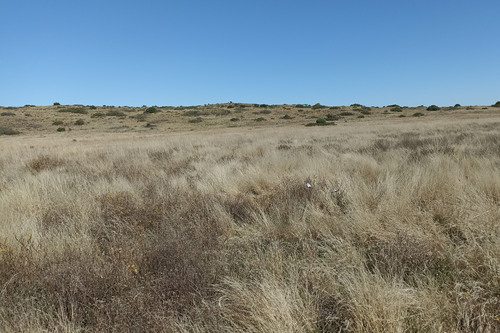
FORAY Vincent
- Institute de Recherche sur la Biologie de l'Insecte (UMR-CNRS 7261), Université de Tours, Tours, France
- Ecology, Evolution, Insecta, Molecular biology, Physiology, Symbiosis
- recommender
Recommendation: 1
Reviews: 0
Recommendation: 1

Negative impact of mild arid conditions on a rodent revealed using a physiological approach in natura
Physiological Adaptations to Arid Conditions in South African Rodents: A Comparative Study of Rhabdomys Species
Recommended by Vincent Foray based on reviews by 2 anonymous reviewersUnderstanding how organisms are affected by environmental variations is a central question in ecophysiology and evolutionary ecology, particularly in the context of global changes(Fuller et al., 2016). Environmental variations challenge organisms' ability to maintain homeostasis leading to divergent adaptations between habitat specialists and generalists (Kawecki and Ebert, 2004). The article by (Keilani et al.) (2024) presents an original contribution to this field by focusing on the response to dry conditions in two rodent species from semi-arid regions of South Africa. The two species, Rhabdomys bechuanae and R.dilectus dilectus, have different environmental niches : R.dilectus dilectus occurring in mesic habitats while R. bechuanae is found in semi-arid and arid habitats. Previous studies highlighted morphological and behavioral adaptations to arid conditions in R. bechuanae (Dufour et al., 2019), the current study focuses on the physiological responses of the two species to seasonal dry conditions. By analyzing body condition, markers of kidney and liver functions, and habitat characteristics the authors aim to understand how aridity impacts parapatric populations of the two species. They hypothesize that i) the aridity of the habitat tend to increase during the dry season, ii) both species can adjust their physiology to dry conditions thanks to phenotypic plasticity, and iii) R. bechuanae, having evolved in arid environments, will cope better with dry conditions than R. d. dilectus.
Consistent with their prediction, Keilani et al (2024) found physiological divergence between the two species. They also observed six blood markers (out of 12 tested) showing significant temporal changes, indicating resource depletion as the dry season progressed, even though the year of study was influenced by a relatively mild La Niña event (i.e. wet year). Both species displayed similar physiological responses to the dry conditions, such as reduced blood albumin level by the end of the dry season, confirming albumin as a reliable indicator of malnutrition and nutrient deficiency (AL Eissa et al., 2012). In terms of interspecific differences, R. bechuanae exhibited better water regulation, with lower sodium, potassium, and total bilirubin levels, which may indicate adaptation to drier environments. The study concludes that R. bechuanae appears better adapted to cope with arid conditions, highlighting the importance of physiological studies in understanding species' responses to climate change, and suggests that harsher dry seasons could further challenge R. d. dilectus, particularly in semi-arid zones. This study underscores the value of studying species in their natural environments to fully understand the scope and limitations of their responses to environmental changes.
References
Dufour, C.M.S., Pillay, N., Avenant, N., Watson, J., Loire, E., and Ganem, G. (2019) Habitat characteristics and species interference influence space use and nest-site occupancy: implications for social variation in two sister species. Oikos128: 503-516.
https://doi.org/10.1111/oik.05357
AL Eissa, M.S., Saad, A., Al Farraj, S.A., Saud, A.A., Al Dahmash, B., and Hamad, A.Y. (2012) Seasonal variation effects on the composition of blood in Nubian ibex (Capra nubiana) in Saudi Arabia. Afr J Biotechnol 11: 1283-1286.
https://doi.org/10.5897/AJB11.2004
Fuller, A., Mitchell, D., Maloney, S.K., and Hetem, R.S. (2016) Towards a mechanistic understanding of the responses of large terrestrial mammals to heat and aridity associated with climate change. Climate Change Responses 3: 10.
https://doi.org/10.1186/s40665-016-0024-1
Hamilcar S. Keilani, Nico L. Avenant, Pierre Caminade, Neville Pillay, Guila Ganem (2024) Negative impact of mild arid conditions on a rodent revealed using a physiological approach in natura. bioRxiv, ver.9 peer-reviewed and recommended by PCI Zoology
https://doi.org/10.1101/2024.03.11.583554